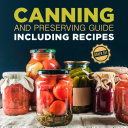Engineering Plant-Based Food Systems
Apie šią el. knygą
Apie autorių
Dr Prakash is an academic at UQ with over a decade of experience focused on research related to food processing and the oral and gastrointestinal dynamics of complex food systems. Coordinate and teach – Food Sensory and Structures and Functional Food. Her experimental approaches span from the use of processing devices (3D food printers, ultra-high-temperature processing plants, homogenisers), mechanical measurements (tribology, rheology), imaging (confocal laser scanning microscopy), electrophoresis, in vitro oral-gastrointestinal model with extension to in vivo human trials (sensory) to understand the changes during food processing from a nano-to-human scale. Dr Prakash has commenced several projects in food 3D printing. She is also a guest editor of Journal of Food Engineering managing the special issue on the recent development on food 3D printing technology.
Professor Bhesh Bhandari has been associated with the University of Queensland for the last 30 years. His research and teaching areas include food materials science, processing, physical and engineering properties of foods. Prof Bhandari has published three co-edited books and more than 500 book chapters and research papers. His publications have been cited more than 36000 times (Google scholar) and is recognised as one of the leading researchers globally in glass transition and encapsulation technologies in food science discipline. He has patented two significant technologies, a continuous microgel particle formation device for encapsulation of food and pharmaceuticals and a technology to produce ethylene powder by applying materials science approach. He has currently several projects on 3D food printing.
Claire Gaiani is Professor at Université de Lorraine – Laboratoire d’Ingénierie des Biomolécules. She has successfully managed fundamental competitive programs including the French ANR (French National Agency for Research) and European projects and manages many industrial partnerships with leading international food companies (including Nestle, Lactalis, Bel, Bongrain, and Senoble).





